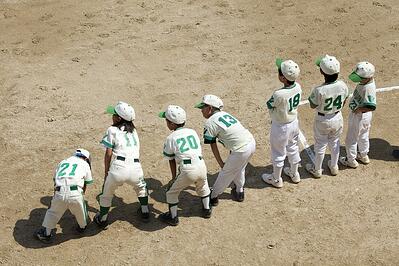Track and field. Football. Baseball. Swimming. Volleyball. Basketball. Sports are some of the time-honored pastimes of youth. They give children something fun to do outside of school, help them build confidence, teach them about teamwork and encourage them to build a network of friends.
They can also have their downside, particularly when it comes to risk of injury. You want to protect your child, so you probably want to know: What are some of the most common sports injuries?
Overuse injuries
One of the most common injuries among youth athletes are overuse injuries. These are common conditions that occur among children who specialize in certain sports and fail to allow their bodies adequate time to recover.
Athletes are at risk if they don’t follow a proper training regimen, have bad form, don’t use proper equipment or don’t take a break between seasons.
Common signs of overuse injuries include:
- Pain
- Cramping
- Muscle weakness
- Tenderness
- Stiffness
- Tingling sensation
- Inability to perform at a previously achieved level
- Ineffectiveness in a chosen sports position
Symptoms may increase while the athlete is playing sports, even to the point of constant pain.
A common misconception about overuse injuries is that by simply playing more than one sport necessarily protects a child. Experts recommend that children have variety in their sports routine. Make sure some sports are recreational versus competitive and make sure the athlete takes at least one season off of any sport.
Beware that some children may conceal injuries in order to avoid disappointing a parent, guardian or coach. Encourage your child to report when they don’t feel their best and seek the counsel of an orthopedic expert when they do. Orthopedic urgent care is an option for some children.
Other injuries
Some of the other most common youth sports injuries include youth concussions, which are of particular concern when they affect developing brains.
Many people believe some common misconceptions about concussions. They may believe that the head needs to be hit or hit something or that an athlete may only have a concussion if they go unconscious.
These are both incorrect — a concussion can occur during any event in which the brain gets jarred or jostled in the skull. A person can occur when a person’s head impacts or is impacted by another person, an object or the ground. However, it can also occur when the lower body is hit or in a whiplash type scenario. There is no one specific way to experience a concussion.
Other top sports injuries include:
- Rotator cuff injuries
- Tennis elbow
- Patella-femoral pain and dysfunction
- Anterior cruciate ligament (ACL) tears
- Meniscus tears
- Broken bones, or fractures
An orthopedic doctor with expertise in sports medicine can help diagnose and treat any of these top youth sports injuries.
Diagnosis, Treatment and Recovery
Diagnosing a sports injury will likely begin with a physical exam and a conversation with your doctor about your child’s activities, sports and symptoms. Diagnostics may also include X-rays or magnetic resonance imaging (MRI) scans. Again, seeing a specialist with a sports medicine background will ensure a proper diagnosis and an appropriate course of treatment.
Treatment may include medication, rest, physical therapy, exercise instruction, joint mobilization, therapeutic taping or even surgery. An orthopedic doctor will be able to give you a timeline for appropriate and safe return to the patient’s sports and activities.
An athlete’s injury, pain level and ability to participate in sports and activities will determine treatment and how long recovery will take. Each individual athlete’s recovery will be different. Finding ways to keep them involved during the recovery period and engaged in the course of treatment will help ensure the smoothest and quickest return to sport.

